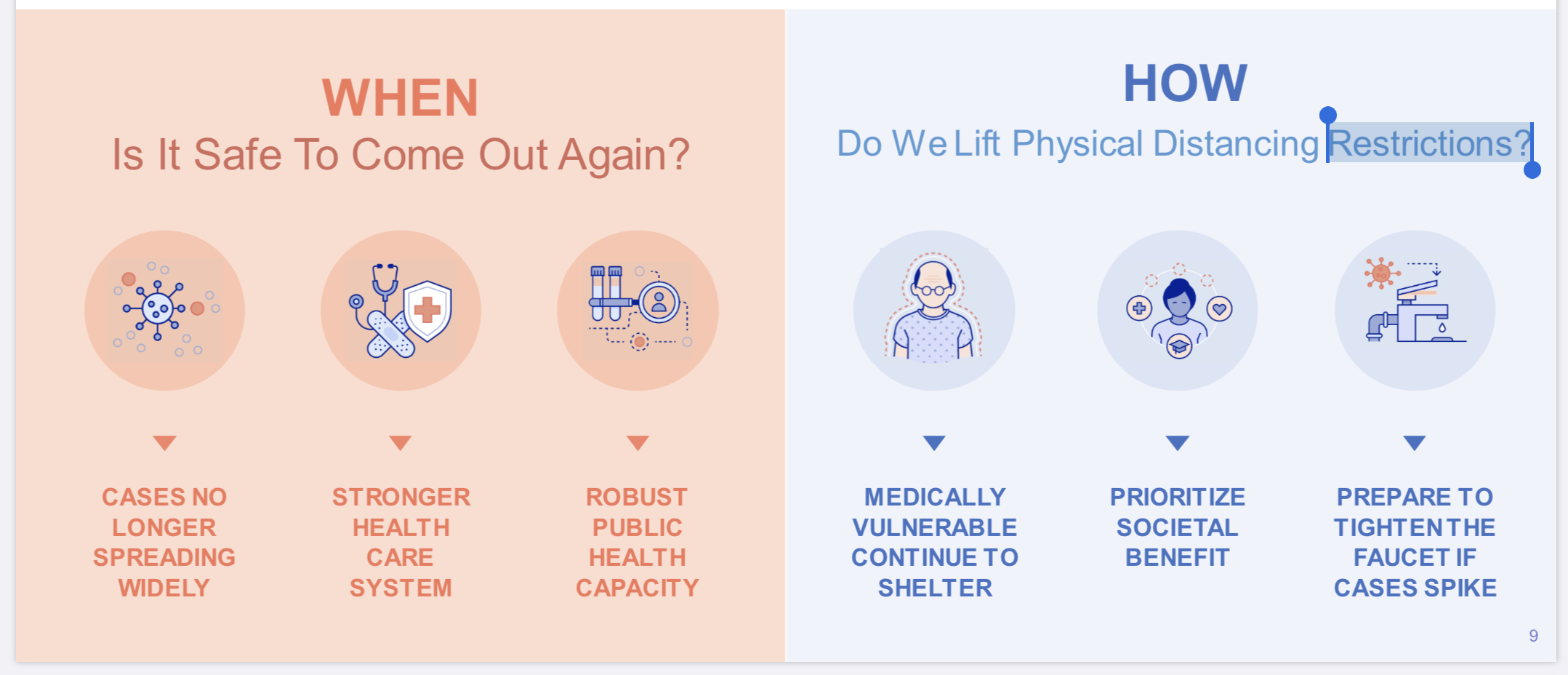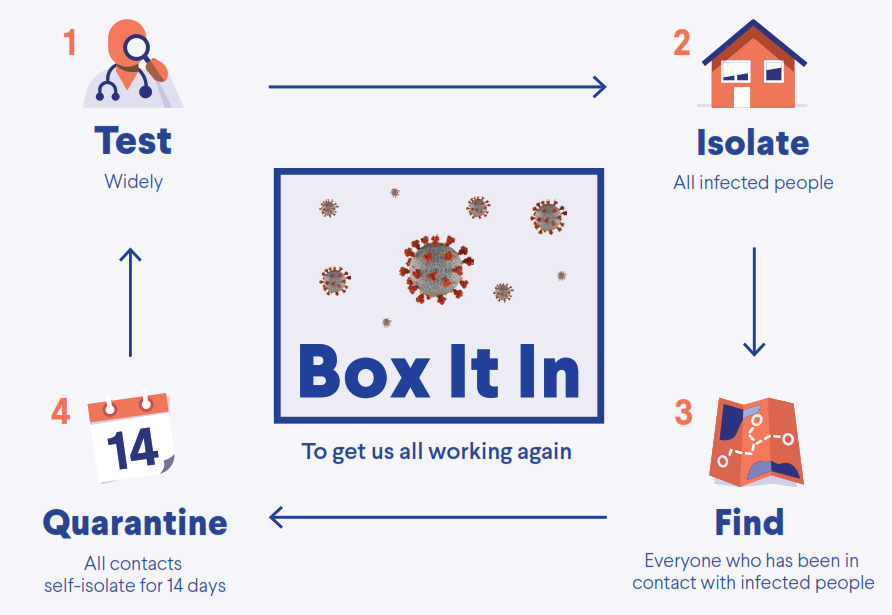Sunday, May 10, 2020
Neighbors,
This week, both at the State level and here in Burlington, we started talking about what it will look like to “restart” parts of our society and economy. As a result of our collective action, we are in a position where – slowly and carefully – we can begin to take a few steps back out from the full shutdown.
We’re able to have this conversation now because, after nearly two months of sacrifice, we have flattened the curve of the first wave of COVID-19 infections in our community. We also have used our time during this shutdown to build out our public health infrastructure, improve our understanding of this virus and its associated risks, and lay the groundwork for a measured reopening of the community. I’ve found the attached graphic helpful in thinking about the “when” and “how” of these next steps.
At the same time, we must all remember that this battle against coronavirus is far from over – indeed, it’s likely that we are still in the early stages of this pandemic, and we will need to figure out as a community how to manage the risks of the virus for many months to come. If the first phase was all about “flatten the curve,” this next phase is going to be about what national experts are starting to refer to as “box it in.” “Box it in” has four essential strategies: Test widely, isolate all infected people, find everyone who has been in contact with infected people through contact tracing, and quarantine all contacts for 14 days. We’re going to be talking about this in much more detail during a Telephone Town Hall that we’re hosting next week. Mark your calendars for Wednesday, May 13 at 5:10 pm, and please stay tuned for additional information – I hope you can join us.
In keeping with all of this, and building off of State actions this week, here in Burlington we are looking at what we can do that will have a big societal impact and a low risk. Here are the next steps that we have taken or are working toward:
First, we reopened some Parks facilities this weekend including dog parks, tennis courts, pickleball courts, and the Skate Park. This means that we removed closure signage, reinstalled nets, unlocked gates, and added new signage at the dog parks. At this time, playgrounds and basketball courts remain closed, and leagues and other organized games are not restarted. We are taking these steps following guidance that in these types of settings, the risk of transmission of the virus appears to be low, and the benefits to our mental and physical health are high.
Second, we are analyzing whether we will be able to run youth camps and programming this summer, and planning to try to do so if we can safely. This could change: The State has not yet issued all of the guidance that will apply this summer, and emerging research could alter approach. Further, what these camps look like will almost certainly be altered from past years. Big picture, though, we think it’s important for Burlington children and families that these summer camps reopen if possible, and I have asked our City departments that run summer youth programming – Parks, Burlington City Arts, and the Fletcher Free Library – to do the advance planning necessary for that to happen. For other organizations in the Burlington area that run summer camps, we encourage you to analyze whether you will be able to run those camps as well. If you have questions about State guidance or how to follow it, contact our Burlington Resource & Recovery Center.
Third, we have created a working group that is looking at how to allow retailers and restaurants to conduct more business outside once State guidance permits it, so that some business activities can restart while allowing for physical distance. We are developing a plan so that we can be ready when State guidance changes.
Fourth, and most importantly, even as we begin this process, we are going to continue to work relentlessly to protect our most vulnerable. We’re doing this through a senior care providers working group, through our Trusted Community Voices program to better connect the City with immigrant and refugee communities in Burlington, through our BTV Community Mask Initiative to provide free and high-quality masks to all essential workers in Burlington who want one, and by advocating for new protections for people experiencing homelessness or who live in vulnerable facilities.
I expect that in some ways, this next phase may be even harder than the first phase, and we may well have to deal with setbacks that require future tightening of restrictions. However, data and the public health experts are telling us now is the time to begin taking these steps – steps that are measured and incremental, that follow the best information we have, and that prioritize public safety. Further, we know that these steps are needed ones for our collective physical, emotional, and economic well-being.
Thank you to everyone for the ways that you have supported each other through the first phase of our response to this pandemic. As we head into the next phase, I know that we will continue to get through it in the same way – together.
Talk to you soon,
Miro
Two graphics that I've found helpful in thinking about this, based on the work of Dr. Tom Frieden:

